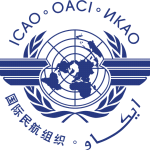The International Civil Aviation Organisation’s (ICAO) new Remotely Piloted Aircraft Systems (RPAS) Panel aims to deliver standards for unmanned aircraft to the organisation’s governing council in 2018. Once approved, the standards will guide ICAO’s 191 member states in setting their own national regulations. The overall process of producing RPAS standards is expected to take a decade or longer.
The panel’s current focus “is on development of standards and recommended practices (SARPs) for adoption by the Council of ICAO in 2018 related to airworthiness, operations (including RPAS operator certification) and licensing of remote pilots,” Leslie Cary, ICAO’s RPAS programme manager, wrote in response to an AIN query. “Guidance material related to command and control in support of airworthiness and operations certifications will be part of the 2018 deliverable.”
The panel plans to complete SARPs for air traffic management and “detect and avoid” requirements for unmanned aircraft in 2020, said Cary, who serves as the RPAS Panel secretary. “Most topics will take several years and several packages to complete; the 2018 packages will be the start of a very complex activity,” she said. “We anticipate a rolling delivery of SARPs, Procedures for Air Navigation Services and guidance material on a biennial basis for the next 10+ years until all the topics are complete.”
Twenty-one states and nine international organizations nominated members to serve on the panel, Cary said. The members held their first meeting in late November and elected Randy Willis, manager of air traffic strategic operations with the U.S. Federal Aviation Administration’s Unmanned Aircraft Systems Integration Office, to serve as chairman, and Mike Gadd, manager of aircraft certification with the UK Civil Aviation Authority, as vice chairman. The panel’s next meeting will be held June 15-19 in Montreal.
The RPAS Panel replaced a lower-level Unmanned Aircraft Systems Study Group that ICAO formed in 2007. The study group produced several guidance documents, including Document 10019, or “Manual on Remotely Piloted Aircraft Systems,” which ICAO expects to publish in March. The manual “serves as an educational tool for states, industry, service providers and other stakeholders on most of the topics that comprise the regulatory framework,” Cary said. “It discusses how existing manned aviation provisions apply to unmanned (aircraft) and provides some guidance on how to address the gaps. The material will be revised and expanded as the actual regulatory framework develops and is adopted.”
Aerospace companies in Europe and the U.S. are developing UAVs to meet current manned and future unmanned aircraft certification requirements. In October, Airbus Defense in Spain formally applied to the European Aviation Safety Agency for civil type certification of its 1,256-pound Atlante UAV—the continent’s first such application. Airbus said a second Atlante is now flying “and has been conducting various trials of different sensors, systems and guidance techniques.”
France’s Sagem completed a series of test flights of its one-ton Patroller UAV near Toulouse in November that demonstrated “a complete anti-collision function.” The project also demonstrated the Patroller’s ability to perform approaches to Toulouse-Blagnac airport based on ATC procedures.
In the U.S., General Atomics, the FAA and NASA conducted flight tests in November of NASA’s Ikhana Predator B fitted with a “detect and avoid” suite, including General Atomics’ due regard electronically scanned radar.
Source: AIN Online

